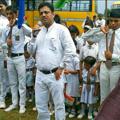Question Text
Question 1 :
Using fundamental theorem of Arithmetic find L.C.M. and H.C.F of $816$ and $170$.
Question 2 :
The statement dividend $=$ divisor $\times$ quotient $+$ remainder is called 
Question 6 :
Consider the following statements :<br/>1. $\displaystyle \frac{1}{22}$ can not be written as terminating decimal <div><br/><span>2. $\displaystyle \frac{2}{15}$ can be written as a terminating decimal </span><br/></div><div><span><br/></span></div><div>3. $\displaystyle \frac{1}{16}$ can be written as a terminating decimal </div><div><br/>Which of the statements given above is/are correct ?</div>
Question 7 :
Without actually performing the long division, state whether the following rational number will have terminating decimal expansion or a non-terminating repeating decimal expansion. Also, find the numbers of places of decimals after which the decimal expansion terminates.<br/>$\dfrac { 13 }{ 3125 } $
Question 8 :
If HCF of $210$ and $55$ is of the form $(210) (5) + 55 y$, then the value of $y$ is :<br/>
Question 12 :
The number of times $99$ is subtracted from $1111$ so that the remainder is less than $99$ is:<br/>
Question 13 :
Three ropes are $7\ m, 12\ m\ 95\ cm$ and $3\ m\ 85\ cm$ long. What is the greatest possible length that can be used to measure these ropes?
Question 17 :
When a natural number x is divided by 5, the remainder is 2. When a natural number y is divided by 5, the remainder is 4. The remainder is z when x+y is divided by 5. The value of $\dfrac { 2z-5 }{ 3 } $ is
Question 19 :
Express the following in the form $\frac{p}{{q,}}$ where $p$ and $q$ are integers and $q \ne 0.$




























